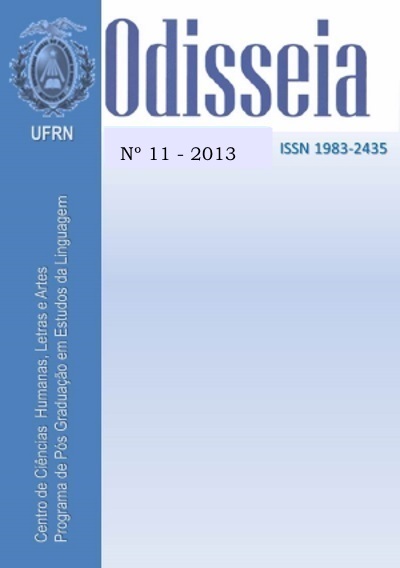The power of the apostrophe: linguistic landscape in Natal, Rio Grande do Norte
Palavras-chave:
Linguistic Landscape research. English Language Teaching. The Apostrophe.Resumo
This article presents a Linguistic Landscape research (LANDRY; BOURHIS, 1997; BEN-RAFAEL et al, 2006; SAYER, 2010) carried out by a group of undergraduate students at a Federal university in Rio Grande do Norte, as part of their final project in a mandatory class for their major: Morphosyntactic aspects of the English Language. Provoked by the professor to find instances of code mixing or switching in the linguistic landscape, and noticing the extensive use of the apostrophe in in signs in Natal, RN, that functioned as a genitive case, which is a loan from English usage, students devised this study to map the use of the apostrophe in 4 representative neighborhoods with different quality of life indexes, in Natal, RN, to: identify and classify patterns of usage, determine whether the usage is democratic, determine what meanings the use of the apostrophe construes. Results showed that usage fell into three categories: to impart trendiness or sophistication; for aesthetic reasons – to make the sign more beautiful; and to show possession – grammatical loan function from English. We therefore conclude that, in Natal RN, the apostrophe, used to construe the meaning of possession, has entered into common usage in the Brazilian Portuguese at least in Natal, RN, as well as to impart social meanings in the discourse that include trendiness, coolness and sophistication, and aesthetic value— beauty. These patterns were found in all four neighborhoods and therefore we conclude that the use is also democratic. Future studies may include a more systematic investigation with a broader sample in this same geographical context, and nationally.
Downloads
Downloads
Publicado
Como Citar
Edição
Seção
Licença

Este trabalho foi licenciado com uma Licença http://creativecommons.org/licenses/by-nc-sa/4.0

















